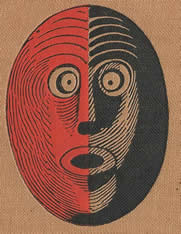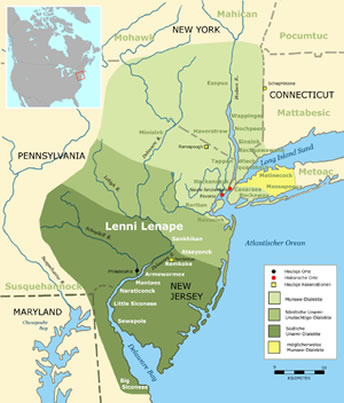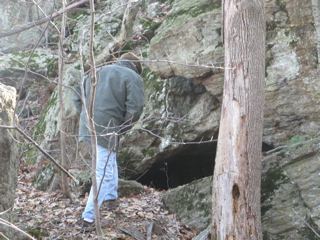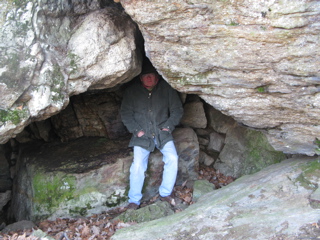NOTES on the Lenape March 2020
Lenape in the Hudson Valley
An Introduction by Warwick Town Historian, Richard Hull
The native Americans, called the Lenape, (the real people)  inhabited the Warwick area for possibly 12,000 years or approximately 365 generations. Peoples of European or African descent have occupied these same lands for about nine generations. Catastrophically, this ancient population was obliterated in little more than one generation, between about 1715 and 1745, victims mostly of European-borne diseases, especially smallpox, measles, and the common cold, for which they had no natural immunities. Before 1609 they were apparently a healthy and robust population free of most infectious diseases. But by the time of white settlement in the early 18th century this demographic disaster had demoralized them and reduced their numbers to the point they could no longer sustain their basic institutions. Those who survived either genetically mixed with the white and black settlers or migrated westward, ending up in Oklahoma, where there is a community of 11,000 people today
inhabited the Warwick area for possibly 12,000 years or approximately 365 generations. Peoples of European or African descent have occupied these same lands for about nine generations. Catastrophically, this ancient population was obliterated in little more than one generation, between about 1715 and 1745, victims mostly of European-borne diseases, especially smallpox, measles, and the common cold, for which they had no natural immunities. Before 1609 they were apparently a healthy and robust population free of most infectious diseases. But by the time of white settlement in the early 18th century this demographic disaster had demoralized them and reduced their numbers to the point they could no longer sustain their basic institutions. Those who survived either genetically mixed with the white and black settlers or migrated westward, ending up in Oklahoma, where there is a community of 11,000 people today
Before the European encounter, the Lenape, an Algonquin clan, maintained a diversified and dynamic livelihood. There were dozens of villages and even more campsites and quarries.They enjoyed a huge variety of natural foods, cultivated small gardens and orchards, and managed their forests from which they drew food, medicines and building materials.In their numerous quarries the local Lenape Indians turned out quantities of finely-crafted durable stone tools which were used by successive generations or traded as far as the Great Lakes, New England, the Chesapeake, and the Delaware and Hudson Rivers.
The lands of Wawayanda,(The Wandering River) which included Warwick, boasted of several distinct ecological and geological niches that provided people with many occupations and natural resources. Local farmers and archeologists have uncovered many thousands of Indian artifacts suggesting that by 1609, our region was likely supporting a larger and arguably more prosperous population than all of Manhattan.
The Lenape Minsi people prospered on the exchange of fine pelts from locally trapped beaver, muskrat, and otter in the incredibly fertile Drowned Lands and on bartering much-coveted metal implements and wampum. They had the additional benefit of extensive river systems running north (the Wallkill) and south (the Wawayanda) and one which ran in both directions, the Hudson river tidal estuary. In the local mountains of towering trees and sheltering rock formations they secured bounties of game as well as mica and other valuable surface minerals. Major inter-regional trails, like the legendary Wawayanda Path, kept them in touch with peoples and cultures near and far. So, in 1609, Europeans were not entering a land of uncivilized savages and virgin wilderness but one of longstanding human communities that had achieved an understanding and dynamic equilibrium with the natural world surrounding them.enjoying a lifestyle and interdependence that many of us strive for today. In forging our own future, there is much that we can learn from those who came before us.
Richard W. Hull, Professor Emeritus of History, New York University and Warwick Town Historian

Shadows and Stones in the Hudson Valley
Several years ago, I went on a tour to Ireland, called Shadows and Stones, led by Sylvia Perera, a Jungian therapist and art historian, Michael Paull, a historian at Lehman College and folk singer Cathie Ryan . We visited several out-of the-way areas -- many just fields with odd stones. Hearing the stories behind these cairns gave a whole new depth to landscape. It holds memory It was a magical experience. I brooded all the way home:
What! I have to go to Ireland to get in contact with the 'other' who have been before? There must be places right here in the Hudson Valley! It's called Sacred Geomancy.
That began a long and somewhat difficult seach right here in the Hudson Valley for our places of Shadow and Stone. Many are Lenape Indian sites; some seem to pre-date the Lenape.I have found several and am happy to share what I know and take people to these places:
- Lenape Indian Rock Shelters: the famous Dutchess Quarry Caves,the Ball and the Minisink Rock Shelters.
- unusual stone structures in a creek bed in a public park
- interesting stone features near Fitzgerald Falls on the Chester- Greenwood Lake border
- Churt quarries along the Appalachin Trail and in a public park
- I write about many of the Places in DIRT magazine in my column Thin Places
from Bender's paper on Manitou Stones:
The fate of many of the Manitou stones is not a kind story or legacy for future generations, one generally with an unhappy end or outcome whether large or small. The huge profile rocks are no different, another vestige of world and landscape that is now totally disengaged from the modern world and society. Perhaps it is best if they remain in obscurity and silence. In that way, they can hopefully escape vandalism, the graffiti artists spray paint and otherwise
SITES to VISIT near by
Ball Rock Shelter, Town of Warwick


Minisink Rock Shelter, actually the Hanson Rock Shelter
Pulpit Rock, on West St in Pennings open field.
Records of Lenape hunters waiting atop this rock.
Cairns and Stone Lithics, Fitgerald Falls area, Lakes Rd, Monroe/GL area
Churt Quarries along the Appalachian Trail, Rt 94S
Oh yes, and Indian Rock Plaza, Suffern, NY


Lenape Artifacts
Stone Faces

Collection bought on Ebay, 2008
I am looking for the right public collection
to donate these to.
Jasper Scraper
Description of Collection:
Most were from Budd Lake, New Jersey, near Succasunna, :
- a broken pendant, some large scrapers, a chunk of red jasper,
- the large scraper that looks like petrified wood (it may be just weathered lower quality jasper) found in Hope near 519.
- The smaller brown jasper scraper is from Budd Lake.
- The larger, really sweet looking large brown jasper scraper found in Verona in Essex County along the Peckman River. It has an wonderful patina to it, with a waxy appearance. That blade is 2 1/4" wide and about 3" long.
- a blade made from puddingstone.
- a large chunk of low quality jasper (it looks like petrified wood)
- a broken blade shaft made of jasper.
- black chert
- The points are argilite, rhyolite and chert.
